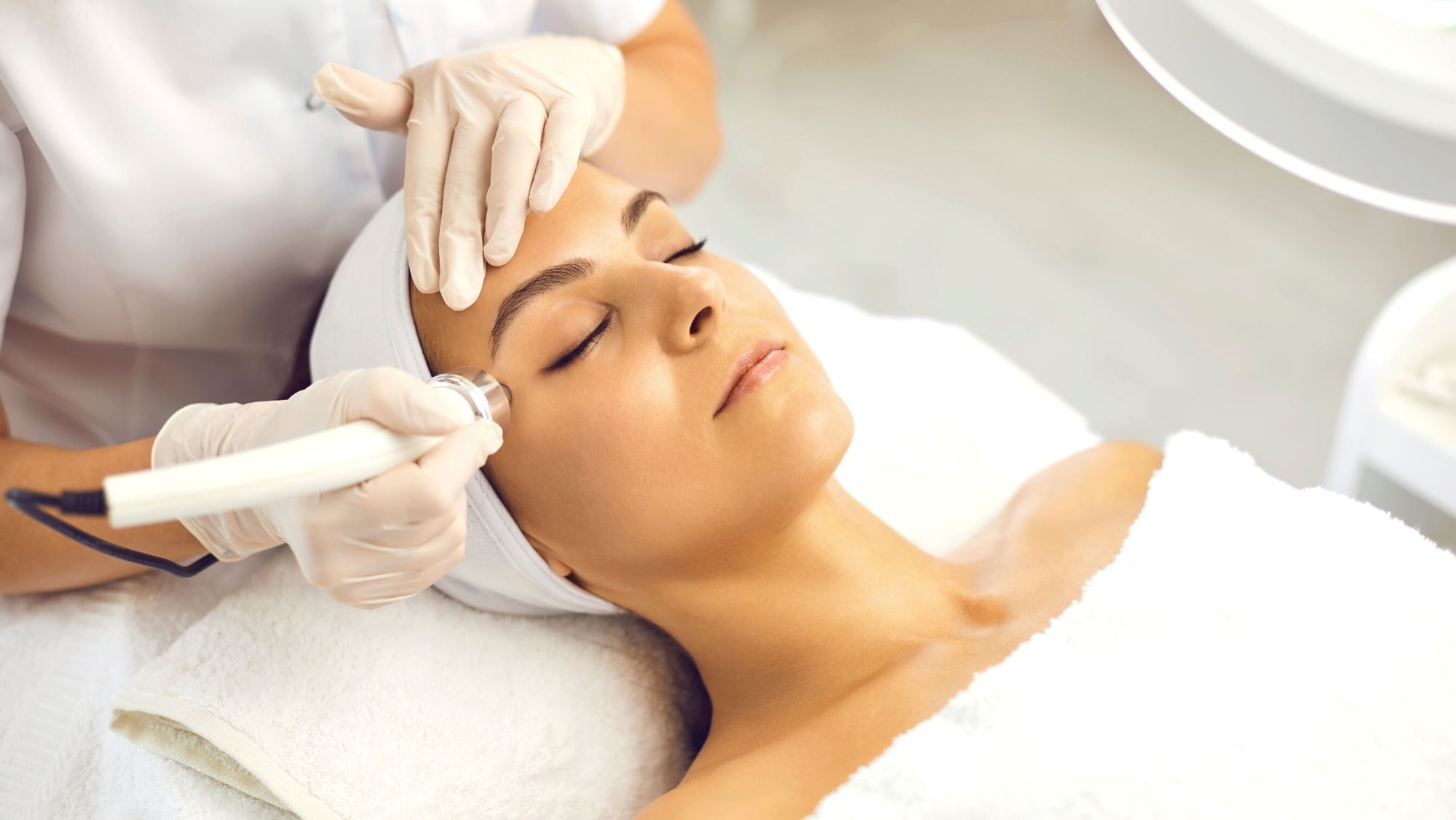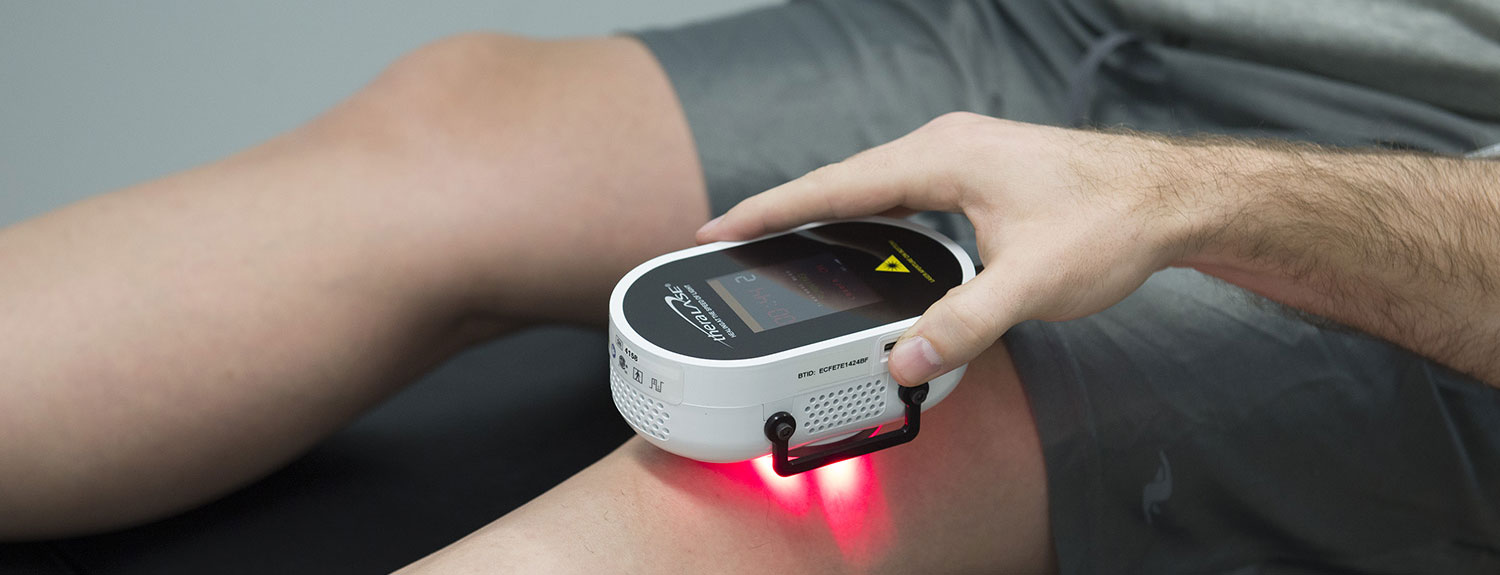Illuminating Hope: The Duty of Laser Light Therapy in Modern Medicine
Wiki Article
The Role of Clinical Laser Treatment in Injury Healing and Tissue Regeneration
Did you understand that medical laser therapy has the prospective to change injury recovery and cells regrowth? Whether you're dealing with chronic injuries, surgical incisions, or tissue damage, laser therapy may provide the gentle yet powerful treatment you need. In this overview, we will discover the duty of medical laser therapy in injury recovery and cells regeneration, reviewing its benefits, techniques, equipment, as well as its factors to consider and constraints.Recognizing Medical Laser Treatment
If you frequently experience injuries or tissue damage, it is essential for you to recognize just how clinical laser treatment can help in speeding up the recovery process (laser therapy). Medical laser treatment is a non-invasive treatment that makes use of concentrated light to boost cellular activity and advertise tissue fixing. The laser discharges a specific wavelength of light that is absorbed by the cells in the targeted area, triggering a series of biological reactions that help with healingAmong the major advantages of clinical laser therapy is its capability to reduce swelling. By targeting the hurt area with the laser, it can help to lower swelling and pain, permitting faster recovery. The laser likewise stimulates the production of collagen, a key part in wound recovery, which aids to strengthen and reconstruct damaged cells.
Clinical laser treatment can be utilized to deal with a selection of problems, consisting of injuries, burns, muscle stress, and joint pain. It is a safe and effective therapy choice, with minimal negative effects. laser therapy light. Several individuals report feeling a warm, soothing sensation throughout the therapy, and experience immediate pain relief
Advantages of Laser Treatment for Injury Recovery
Utilizing medical laser treatment for wound healing offers a number of benefits that can expedite the recuperation process. One of the primary benefits is that laser treatment helps to reduce pain and inflammation associated with wounds. The laser energy boosts the launch of endorphins, which are all-natural pain relievers, giving prompt alleviation. Additionally, the laser likewise aids to lower swelling and soreness, advertising faster recovery.An additional advantage of laser therapy is its capacity to improve blood circulation to the wounded area. The laser light boosts the development of new members vessels, boosting oxygen and nutrient supply to the damaged tissues. This accelerated blood flow assists in the removal of waste products and toxins, further sustaining the healing process.
Laser treatment likewise helps in the development of collagen, a critical component of injury recovery. The laser boosts fibroblast activity, which are cells responsible for collagen production - laser therapy. Collagen aids to enhance the injury and promote the development of brand-new cells, leading to faster injury closure
Additionally, laser treatment has been shown to have antimicrobial impacts, helping to stop infections in injuries. The laser power eliminates microorganisms and other microbes, reducing the risk of issues and guaranteeing a tidy environment for recovery.
Laser Therapy for Cells Regrowth
To promote cells regrowth, clinical laser therapy can be used in combination with various other treatment techniques. Laser therapy has been shown to promote the manufacturing of growth elements and enhance the recovery process. It functions by delivering concentrated light power to the targeted area, which can pass through deep right into the cells and promote cellular task.
Moreover, laser therapy can also advertise collagen synthesis, a vital part of cells regeneration. Collagen gives architectural assistance and aids in the development of brand-new cells. Laser therapy promotes fibroblasts, the cells in charge of collagen production, leading to increased collagen synthesis and boosted tissue regeneration.

Methods and Devices in Laser Therapy
When using medical laser therapy for wound healing and tissue regeneration, it is necessary to understand the methods and devices involved. Laser therapy uses various techniques to achieve optimal outcomes. One typically used strategy is referred to as low-level laser therapy (LLLT) or cool laser therapy. LLLT involves the use of low-power lasers or light-emitting diodes (LEDs) to stimulate mobile task and promote healing. An additional strategy is high-intensity laser therapy (HANDLE), which uses higher power lasers to provide healing effects deeper right into the tissues. HILT is especially effective for deep cells injuries or persistent injuries.In terms of tools, laser treatment devices come in different forms. These tools are portable, very easy to utilize, and enable for precise application of laser treatment. Some laser treatment tools additionally includes innovative features such as adjustable power setups, different wavelengths, and integrated safety measures.
Understanding the techniques and equipment used in medical laser treatment is crucial for health care experts to offer secure and effective treatments. By keeping up to date with the current innovations in laser treatment strategies and equipment, doctor can remain to improve injury recovery and cells regrowth results for their clients.
Limitations and Considerations in Laser Therapy
One important factor to consider in laser treatment is the possible limitations that healthcare specialists must understand. While laser therapy has shown appealing lead to injury recovery and cells regrowth, it is not without its constraints. One constraint is the depth of infiltration. Various laser wavelengths have varying degrees of infiltration, and this can affect the effectiveness of the therapy. As an example, lasers with much shorter wavelengths might have limited infiltration and may not appropriate for dealing with deeper cells or injuries.Laser therapy, when not made use of effectively, can trigger burns, discomfort, and cells damages. In addition, specific person qualities, such as skin type, level of sensitivity, and underlying clinical conditions, require to be taken into consideration to lessen the threat of unfavorable impacts.
Price is one more factor to consider in laser treatment. The tools required for laser therapy can be costly, and the cost may restrict its accessibility in certain health care setups. The upkeep and operational costs of the devices need to be taken into account when thinking about the usefulness of implementing laser treatment.
Verdict
In final thought, medical laser treatment plays a significant role in injury healing and tissue regeneration. With its many benefits, such as accelerated recovery, decreased pain, and marginal scarring, laser therapy has actually confirmed to be an useful therapy alternative.In this guide, we will certainly discover the role of clinical laser treatment in injury recovery and cells regeneration, reviewing its advantages, methods, devices, as well as its factors to consider and limitations.When utilizing medical laser therapy for wound healing and cells regeneration, it is vital to recognize the methods and tools involved. One commonly made use of strategy is understood as low-level laser treatment (LLLT) or cold laser therapy. One more method is high-intensity laser therapy (HILT), which uses greater power lasers to deliver therapeutic results deeper right into the tissues.In conclusion, medical laser treatment plays a considerable function in injury recovery and cells regrowth.
Report this wiki page